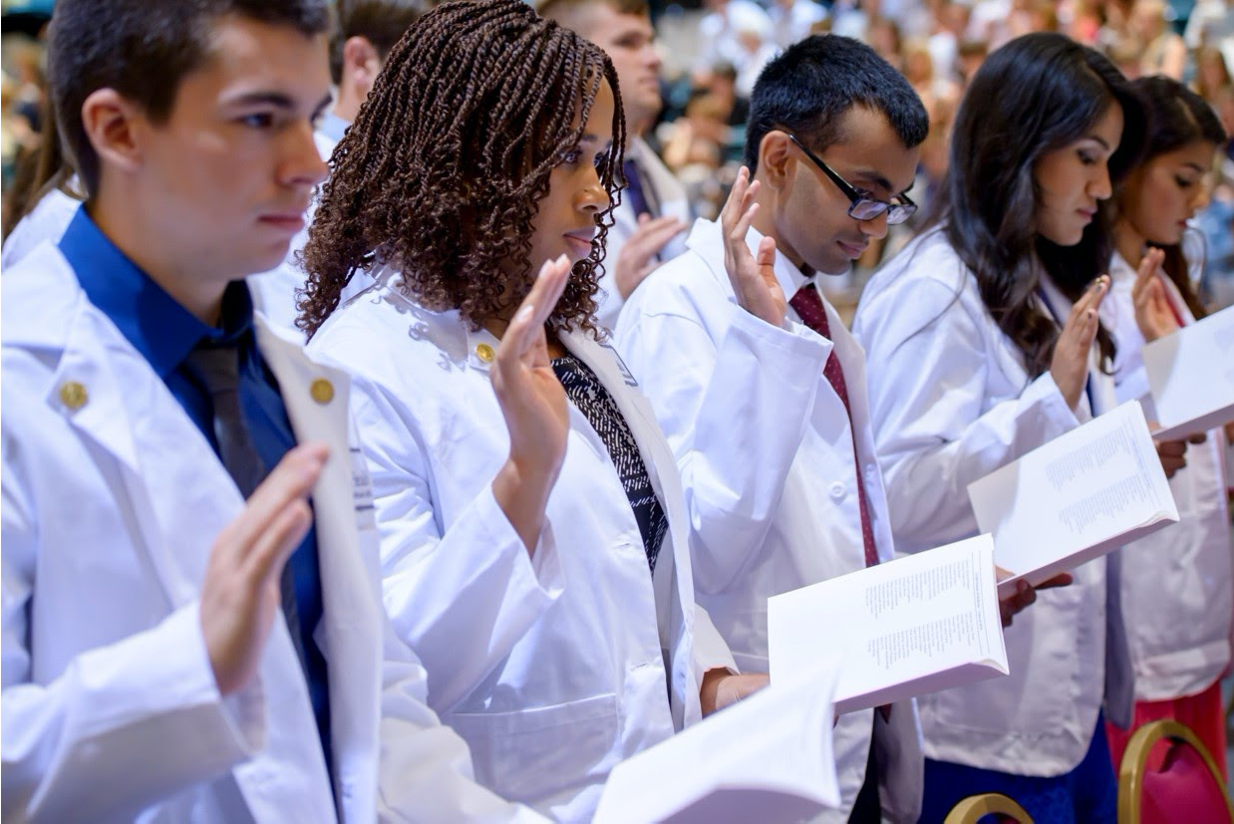Summary
Have you ever wondered what it takes to be a student of medicine? It may seem difficult to think about something as far in the future as medical school or even a “pre-med” program (the classes you take in college that prepare you for medical school). This activity will help you learn more about pre-med programs and how to set yourself up for success on your pre-med journey, including what high school classes to focus on, how you can get admitted to a pre-med program, what to expect in pre-med classes, as well as other related postsecondary (that is, beyond high school) opportunities that exist!
Overview
Have you ever wondered what it takes to be a student of medicine? It may seem difficult to think about something as far in the future as medical school or even a "pre-med" program (the classes you take in college that prepare you for medical school). This activity will help you learn more about pre-med programs and how to set yourself up for success on your pre-med journey, including what high school classes to focus on, how you can get admitted to a pre-med program, what to expect in pre-med classes, as well as other related postsecondary (that is, beyond high school) opportunities that exist!

Snapshot
Engage
Explore
Explain
Extend
Evaluate
Materials List
Pen or pencil
Internet access
Quizlet link (https://tinyurl.com/OPpremed)
Operation Pre-Med Activity Booklet (attached)
Tip of the Iceberg graphic Organizer (included in the attachment; page 5)
2 Stars and a Wish sheet (included in the attachment; page 6)
What To Do
Work through the Tip of the Iceberg activity found in the attached handout (page 4).
Complete the "Below the Waterline" activity (page 4) with this Quizlet link: https://tinyurl.com/OPpremed. Click "Flashcards" to access all of the cards. Use the new information you learn from the Quizlet cards to help you complete your graphic organizer.
Once you have completed steps 1 and 2, reflect on the new information you have learned by completing the Two Stars and a Wish activity in the attached handout (page 6).
Tip of the Iceberg
Notice that in the picture below very little of the iceberg is above water, while the rest is below the surface. The same principle applies to learning. There are a few things that are easily seen (above the waterline) and many more things under the surface, which you learn as your depth of understanding grows (below the waterline). In other words, the part of a subject that we can see is only a small part of a much larger whole.

Materials:
Something to write with
Tip of the Iceberg graphic organizer found on page 5 in the attached handout
Note: If you are unable to print, you can divide a blank piece of paper into thirds. Label each third "Tip of the Iceberg," "Waterline," and "Below the Waterline" respectively.
Instructions:
Tip of the Iceberg: Print the graphic organizer on page 5 (or create your own). Consider everything you know about preparing for a medical career. What would you do in high school to get ready for college? Write down as many thoughts as possible in the "Tip of the Iceberg" section of the graphic organizer.
Waterline: At the "Waterline" section, write down the information you want to learn about medical school.
Below the Waterline: Click on the Quizlet link on page 3 of the booklet (https://tinyurl.com/OPpremed). Look through the Quizlet card set. Whenever you learn something new, write it down in the "Below the Waterline" section of your iceberg.
Two Stars and a Wish
Materials:
Something to write with
Two Stars and a Wish (printed) or a blank sheet of paper
Instructions:
Consider the positive things you have learned, as well as the things you wish you had learned, while participating so far in Operation: Pre-Med.
Two Stars: What are some positive takeaways? Write one in each of the stars below.
A Wish: What is something you wish you could have learned more about? Write it in the thought bubble below.
Extend
The University of Oklahoma Health Sciences Center has several online resources for high school students interested in learning more about health science. Two such programs offered by the OU School of Community Medicine in Tulsa are Club Scrubs and MASH Camp. OU’s College of Medicine OKC campus offers the SPARK Summer Program for high school sophomores and juniors. Additional information is available for high school students interested in medical school, the physician assistant program, and other healthcare fields like hospital administration, nursing, and pharmacy.


Connect With Us
This activity is part of the Career Exploration section of the K20 Online Resources. Find more postsecondary and career exploration activities here: https://tinyurl.com/k20resources.
Do you have questions that weren’t answered in the activity above? Contact us! We would love to connect and share our resources with you.
K20 Center Mentoring Email: gearupmentor@groups.ou.edu
OU College of Medicine Email: odice@ouhsc.edu

Sources
The sources linked in this activity are listed below. Providing a list of resources allows us to give credit for the work of others.
K20 Center. (n.d.). Tip of the iceberg. Strategies. https://learn.k20center.ou.edu/strategy/6f19b778b73e4c339d1a7d9653008def
OU College of Medicine. (n.d.). SPARK Summer Program. The University of Oklahoma. https://medicine.ouhsc.edu/Prospective-Students/Admissions/SPARK-Summer-Program
OU School of Community Medicine. (n.d.). Information for High School Students: Club Scrubs. The University of Oklahoma. http://www.ou.edu/tulsa/community_medicine/currrent-students/student-services/highschool
OU School of Community Medicine. (n.d.) Info for High School Students Interested in Medical School. The University of Oklahoma. http://www.ou.edu/content/dam/Tulsa/scm/rsa/High%20School/HSMD.pdf
OU School of Community Medicine. (n.d.) Info for High School Students Interested in PA School. The University of Oklahoma. http://www.ou.edu/content/dam/Tulsa/scm/rsa/High%20School/HSMD.pdf


